Your daily dose of Product Management Goodness
Want to know more?
We would love to hear your questions and suggestions for topics you would like to see covered in our future blog posts, so don't be shy and get in touch!

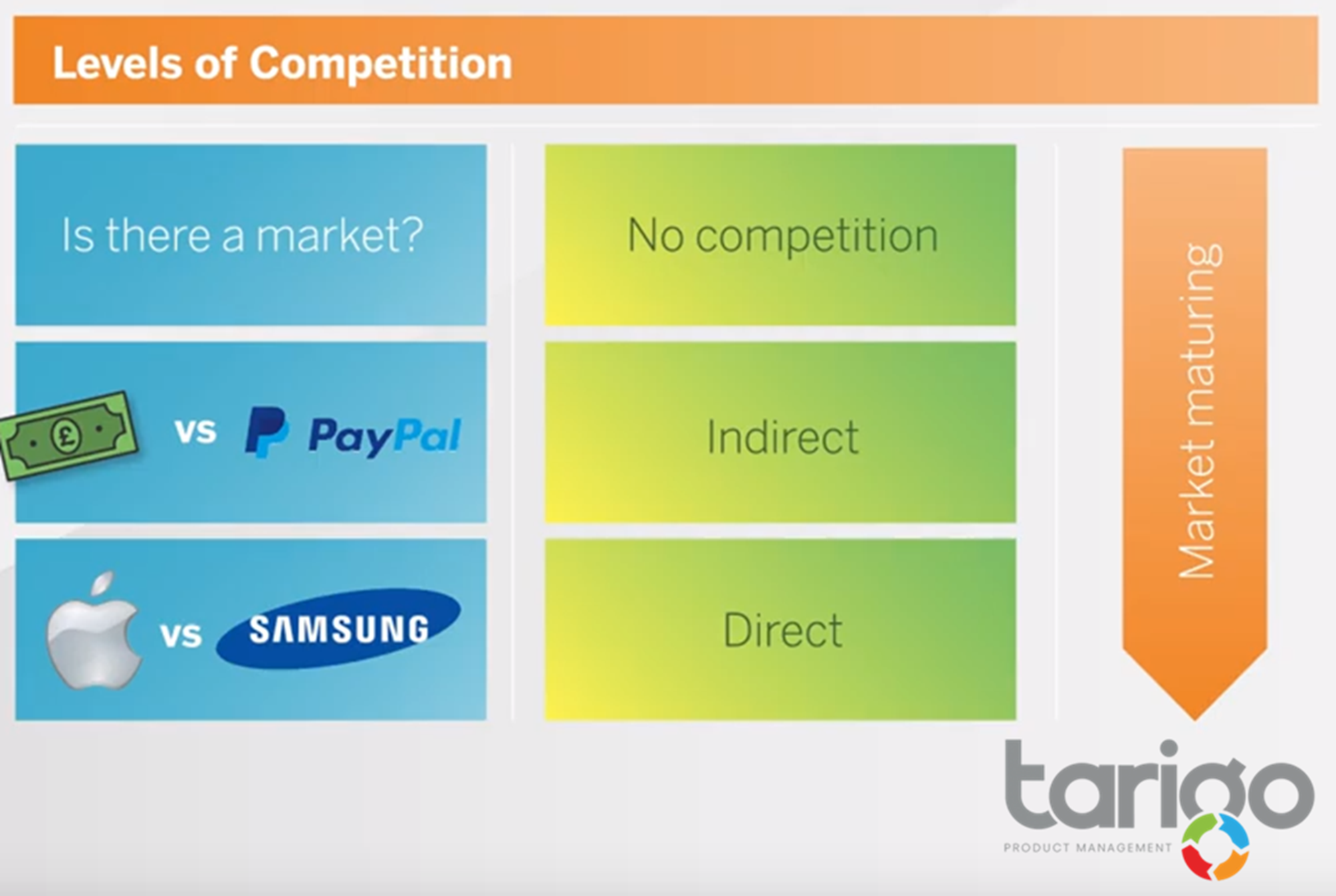
Who do you compete against?
When asked, most Product Managers name other companies that are similar to them. But that’s not really the full picture. When reviewing competitive threats think about it on three levels:
1. DIRECT
These are the competitors that look a lot like your company, with similar products. Think BMW vs Mercedes vs VW/Audi – all occupy a similar space in the market with similar brand profiles, therefore, directly compete with each other in the car market.
2. INDIRECT
Sometimes the competition is less obvious. It’s more about other ways that our customers can solve their problems. These are indirect competitive threats . For example, Sage might DIRECTLY compete with Quickbooks, but INDIRECTLY compete with MS Excel in the micro sector
3. NO COMPETITION
Occasionally we see products with no competition, but is this as great as it sounds? It might mean you’re first to market, but it might equally be that there is no market. Even being first to market is no guarantee of success. Remember Palm Pilots or Betamax or Atari? All three were first to market. All three failed to capitalise on first mover advantage.
read more
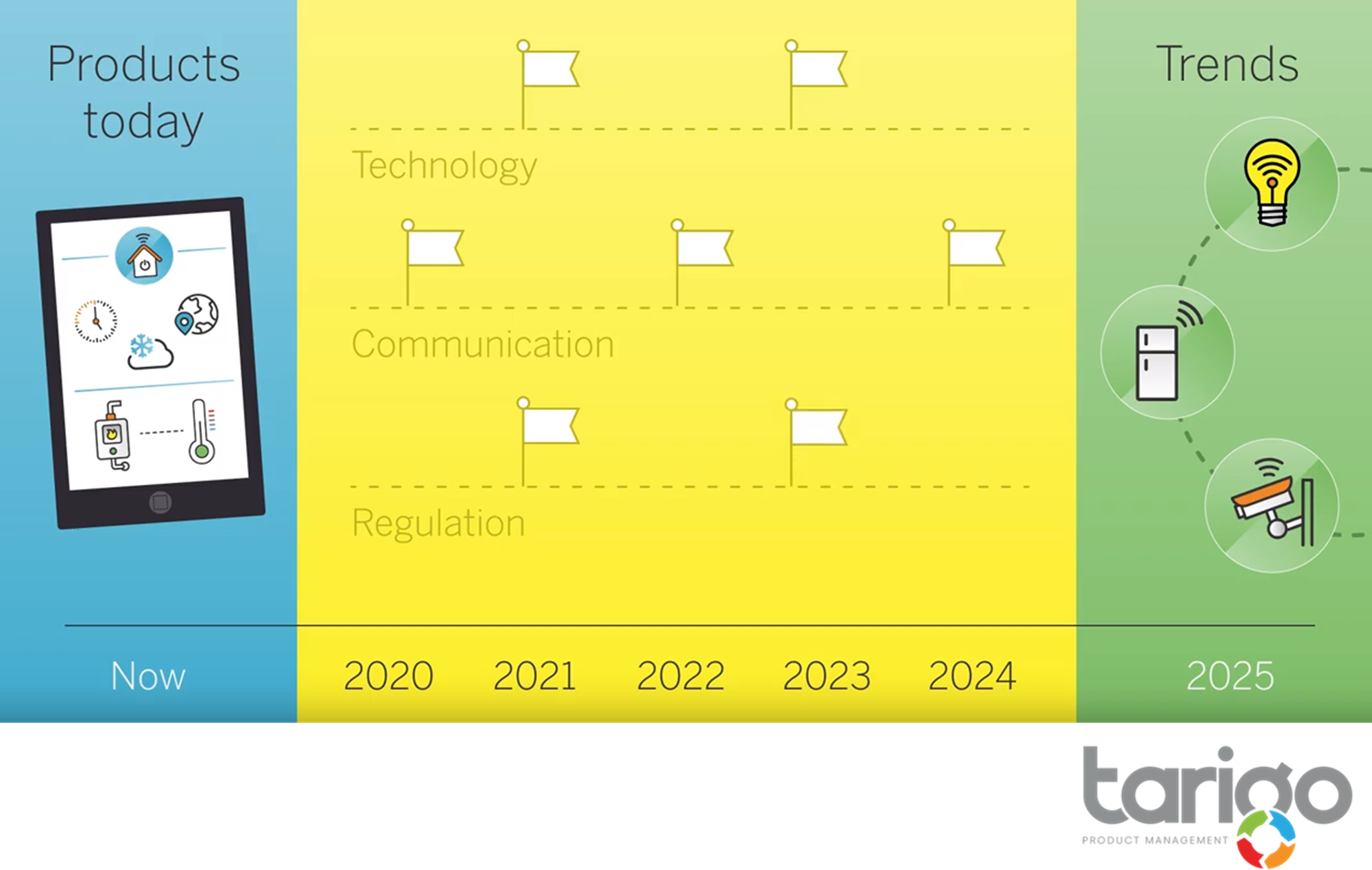
Mega Trend Road mapping
When did you last think about the long term direction of your product? Many of us get so caught up in the day-to-day that we forget to look up. The risk is our product might become irrelevant as trends change market needs. So spend a few minutes thinking:
• What trends are heading towards my market that may impact what we deliver?
• How would our current product suite cope?
• What small technology, communications and regulatory steps should I take to keep my product relevant.
Remember, taking many small steps forward is easier and less risky than one giant leap. But it often gets you to the same place.
read more
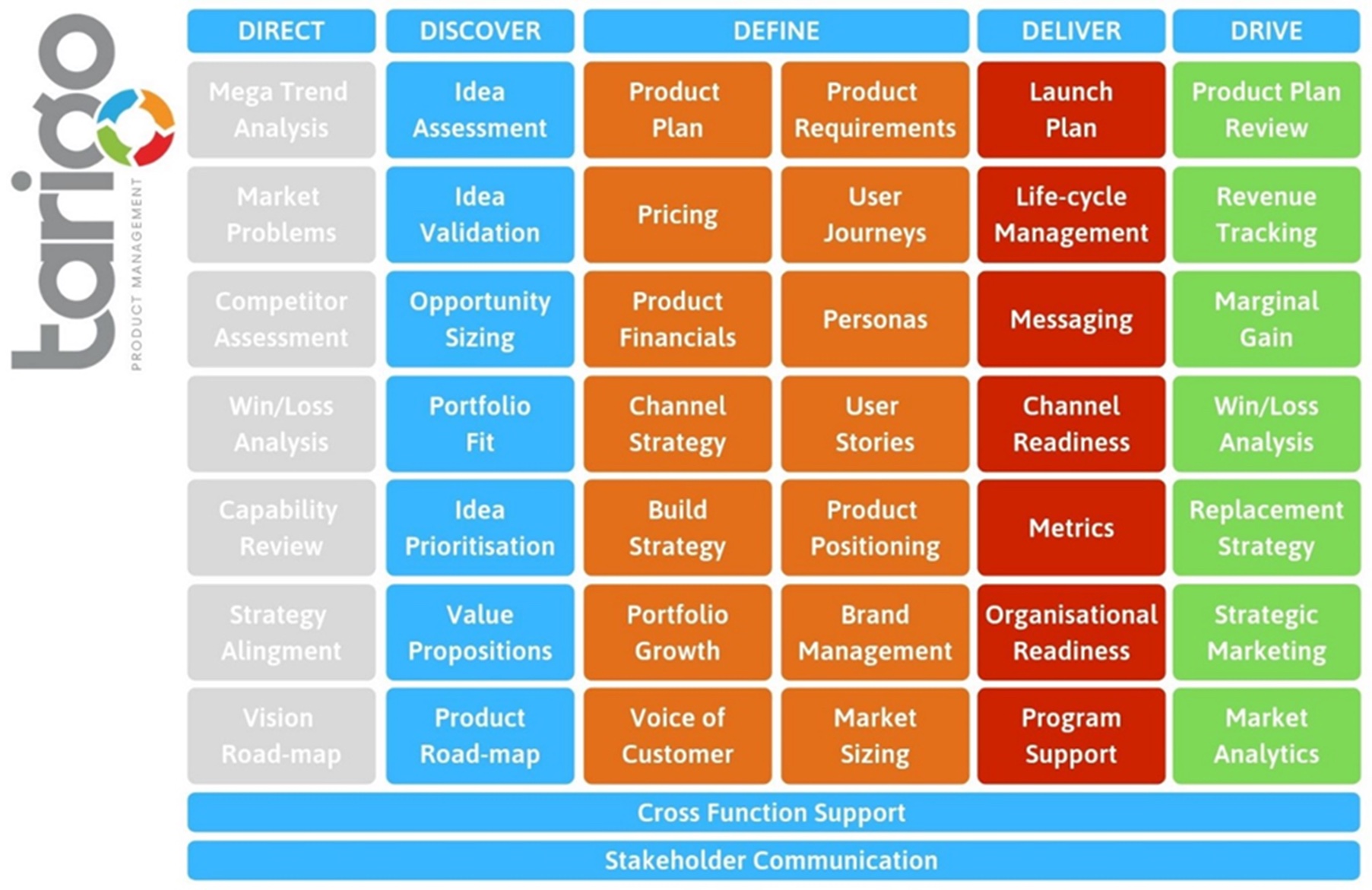
Skill Set
I often describe product management as a multi-disciplinary role. To make the point here is our list of the 44 activities product managers are likely to engage in. Some daily, some rarely. Print it off, stick it on the wall and see how many you tick off. And see where the gaps in your product management skillset are.
read more
Skill Set
I often describe product management as a multi-disciplinary role. To make the point here is our list of the 44 activities product managers are likely to engage in. Some daily, some rarely. Print it off, stick it on the wall and see how many you tick off. And see where the gaps in your product management skillset are.
read more
Skill Set
I often describe product management as a multi-disciplinary role. To make the point here is our list of the 44 activities product managers are likely to engage in. Some daily, some rarely. Print it off, stick it on the wall and see how many you tick off. And see where the gaps in your product management skillset are.
read more
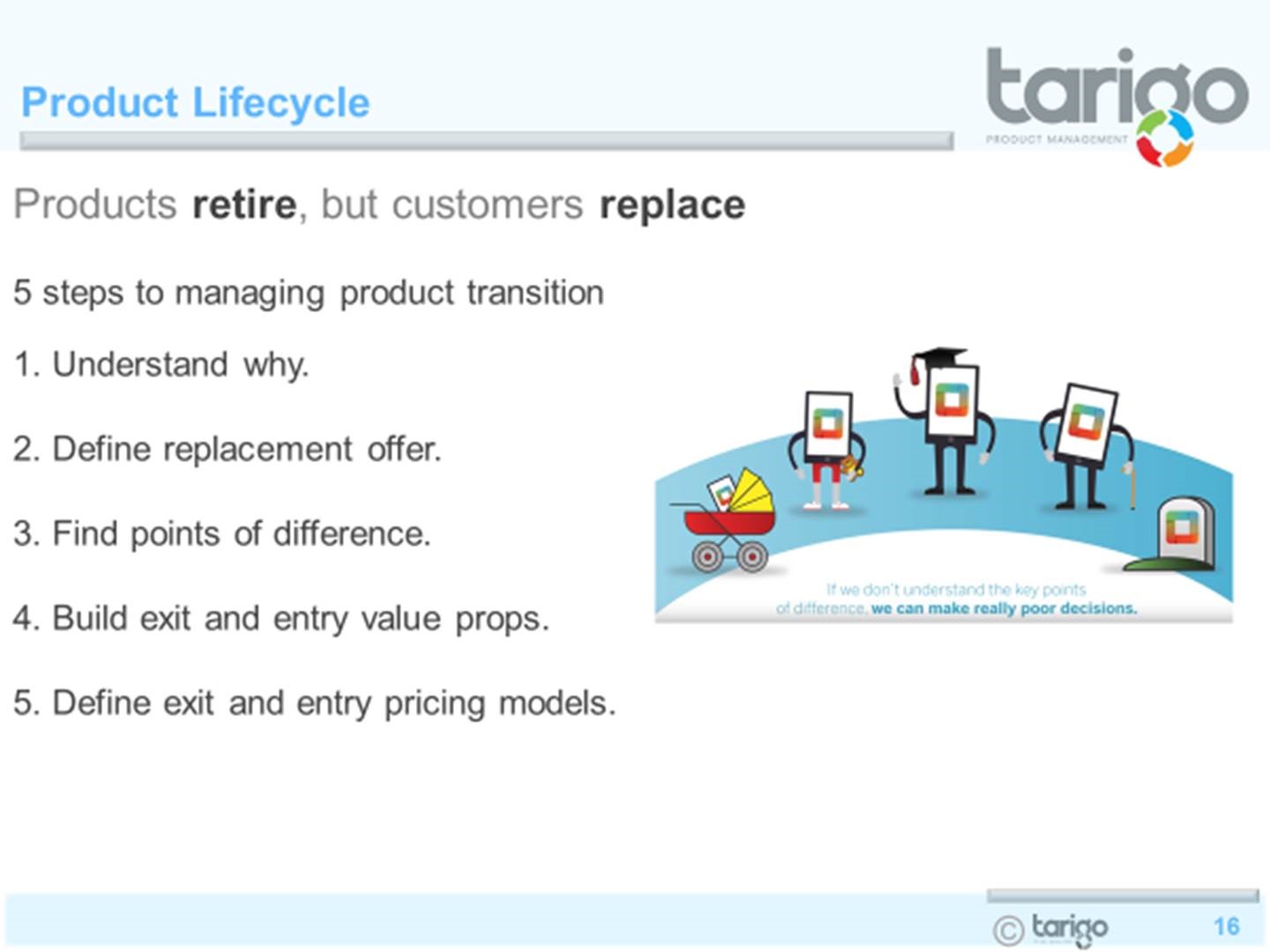
Product Lifecycle
Product retirement is a misused term. Most teams I work with don't retire products, they replace them. They try to transition their customers from product A to Product B. By missing this point, they don’t take a joined-up view and end up unbalanced – the old product often still in market with the new one struggling for traction. Here are five steps to manage a product transition.
1. Understand why.
Make sure you know exactly why a product is planned for retirement. Validate with customer and market feedback. List these issues as problem statements
2. Define replacement offer.
If you want customers to transition, you’ll need a product for them to transition to, so define it. Does it address the problem statements from point 1? If not, start again!
3. Find points of difference.
Treat your old product as a direct competitor. Define clear points of difference with it. If you can’t, go back to step 2.
4. Build exit and entry value propositions
Your sales teams need to clearly describe why the old product is retiring and what the one will offer. Build value propositions for both
5. Define exit and entry pricing models.
Pricing drives demand to some degree – as prices increase, demand falls. Think about the pricing strategy of old and new offer to drive to your desired outcome
read more
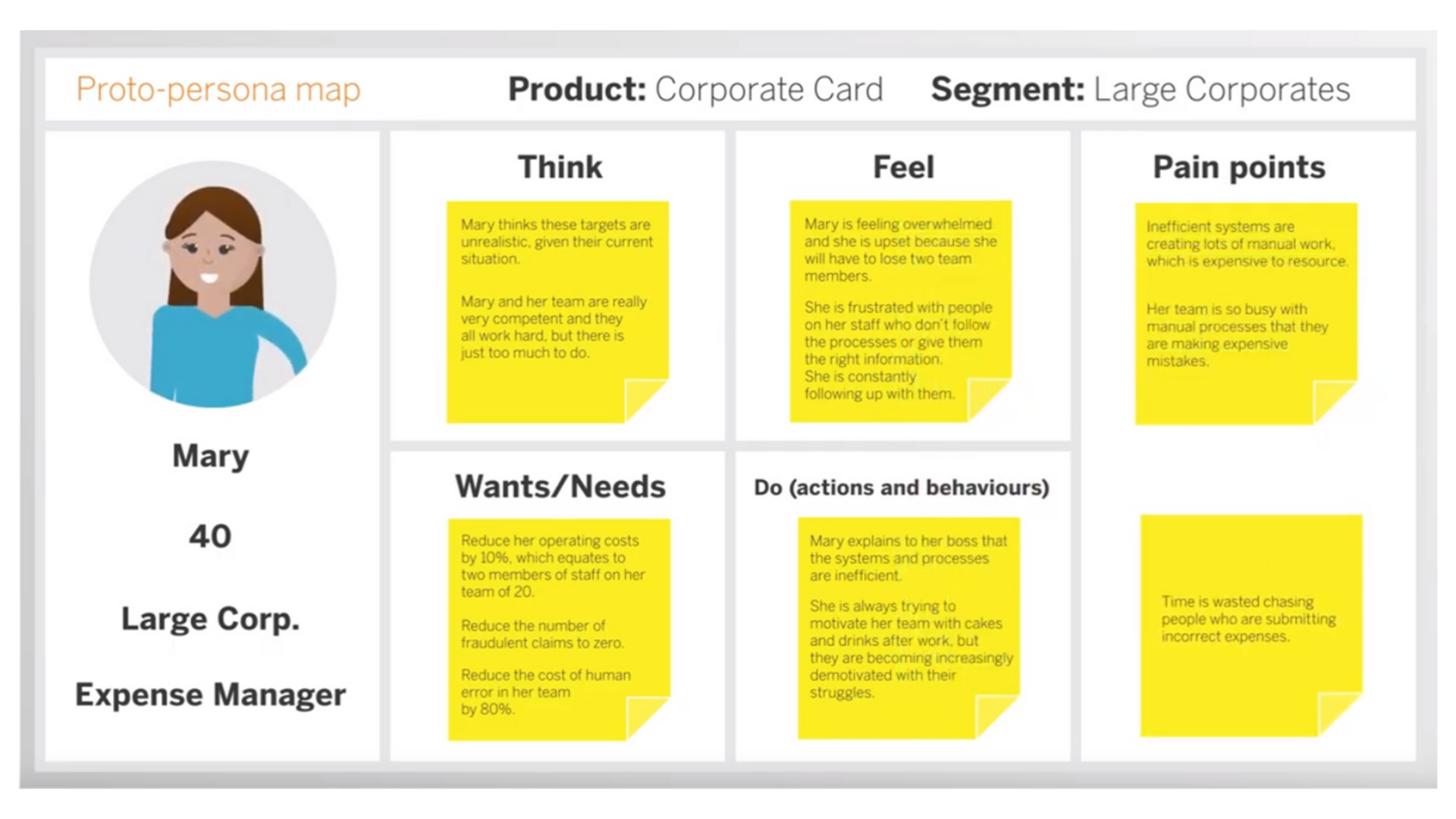
proto personas
We can’t develop a relationship with every single one of our customers, but we still need a way of understanding them. Grouping together customers with similar problems, needs, wants or desires helps us define them.
I find this tool helpful when I’m trying to build out a persona suite for a product or service. Its helps me build proto personas (i.e. unvalidated), that I can then test against real people.
It’s a simple model:
1. Start with their wants and needs
2. Then describe how they think and feel based on those wants and needs
3. Next, what do they do about the situation
4. Finally, knowing more about their situation we can create a problem statement around their pain points
You can use your knowledge and make assumptions to create proto-personas that you then go and validate.
read more
proto personas
We can’t develop a relationship with every single one of our customers, but we still need a way of understanding them. Grouping together customers with similar problems, needs, wants or desires helps us define them.
I find this tool helpful when I’m trying to build out a persona suite for a product or service. Its helps me build proto personas (i.e. unvalidated), that I can then test against real people.
It’s a simple model:
1. Start with their wants and needs
2. Then describe how they think and feel based on those wants and needs
3. Next, what do they do about the situation
4. Finally, knowing more about their situation we can create a problem statement around their pain points
You can use your knowledge and make assumptions to create proto-personas that you then go and validate.
read more
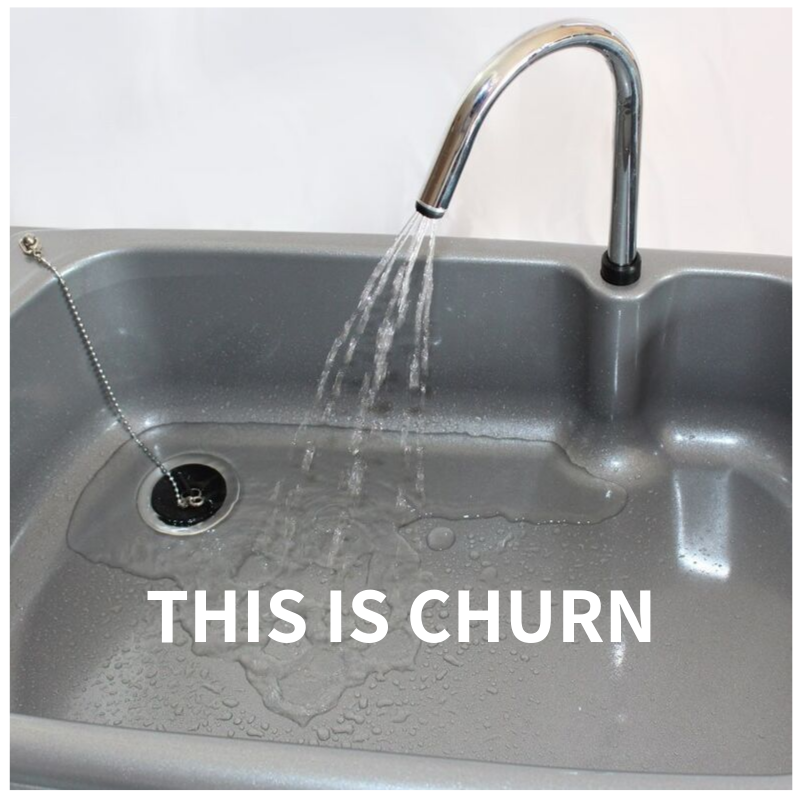
Churn or retention
Ever tried to fill a sink with the plug out? Thought not. Trying to grow a business with a high churn rate is similar – every good thing you do to grow with new product and service is negated by customers leaving.
Something every product manager should sweat about are their churn or retention stats. Here are two things to do to reduce churn:
1. Know your customer behaviour and lifecycle
Customers who churn typically show pre-churn behaviour (lack of use, complaints, etc) or are date driven (contract renewal). Work out the signs and timing and build intervention strategies
2. Make your product frictionless
The more barriers you put in the way of usage, the lower the usage (and therefore retention). Something as simple as a complex login process can kill a product. Think of amazon one click as properly frictionless and try to away the barriers to using your product.
Hard work I know, but think about the results – a two percent reduction in churn equates to more than a 10% revenue increase over a 5 year window. It’s worth the effort
read more
Churn or retention
Ever tried to fill a sink with the plug out? Thought not. Trying to grow a business with a high churn rate is similar – every good thing you do to grow with new product and service is negated by customers leaving.
Something every product manager should sweat about are their churn or retention stats. Here are two things to do to reduce churn:
1. Know your customer behaviour and lifecycle
Customers who churn typically show pre-churn behaviour (lack of use, complaints, etc) or are date driven (contract renewal). Work out the signs and timing and build intervention strategies
2. Make your product frictionless
The more barriers you put in the way of usage, the lower the usage (and therefore retention). Something as simple as a complex login process can kill a product. Think of amazon one click as properly frictionless and try to away the barriers to using your product.
Hard work I know, but think about the results – a two percent reduction in churn equates to more than a 10% revenue increase over a 5 year window. It’s worth the effort
read more
Churn or retention
Ever tried to fill a sink with the plug out? Thought not. Trying to grow a business with a high churn rate is similar – every good thing you do to grow with new product and service is negated by customers leaving.
Something every product manager should sweat about are their churn or retention stats. Here are two things to do to reduce churn:
1. Know your customer behaviour and lifecycle
Customers who churn typically show pre-churn behaviour (lack of use, complaints, etc) or are date driven (contract renewal). Work out the signs and timing and build intervention strategies
2. Make your product frictionless
The more barriers you put in the way of usage, the lower the usage (and therefore retention). Something as simple as a complex login process can kill a product. Think of amazon one click as properly frictionless and try to away the barriers to using your product.
Hard work I know, but think about the results – a two percent reduction in churn equates to more than a 10% revenue increase over a 5 year window. It’s worth the effort
read more
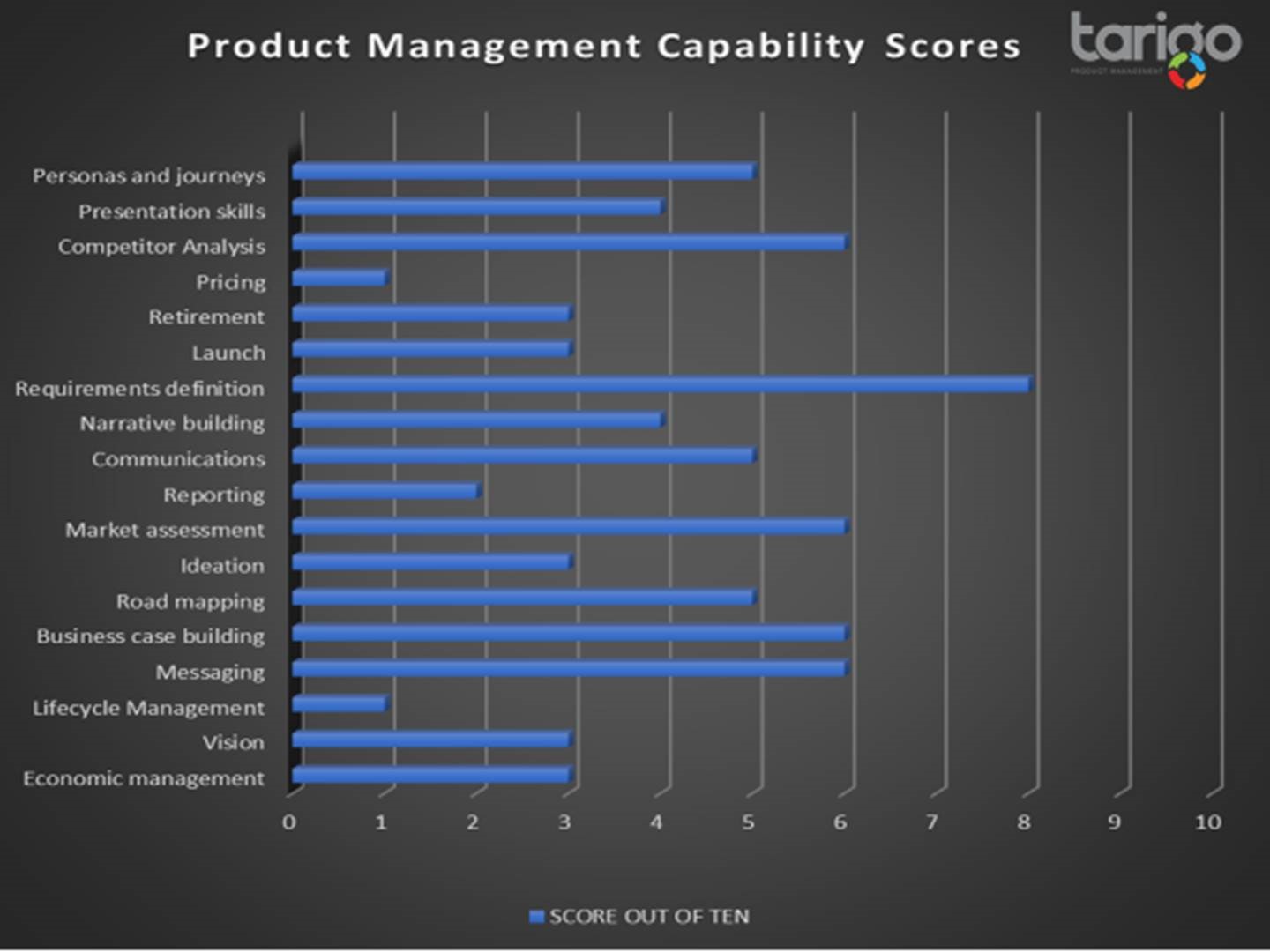
Capability in the Team
How capable is your product management team?
We’ve worked with many product teams over the last twelve months, and I thought it was worth sharing what ‘normal’ looks likes. The graphic below shows the average capability assessment of about 1,500 product managers. We take a look at 18 skills (E.g. Economic Management assesses whether the team have the skills and tools to deliver robust economic data to their leadership team. This includes forecasting costs and demand, reviewing P&L, and presenting the information) and rate the individual and the team. Our most common findings are that PMs have technical competencies, but are often missing some commercial strength (e.g. pricing ), strategic capability (e.g. Vision setting), and communication depth (e.g. narrative building). We can then figure out the best program to plug those skills gaps.
Drop a note to Info@tarigo.co.uk if you’d like capability template that sits behind this so you can reflect where you and your team are in terms of core capability
read more
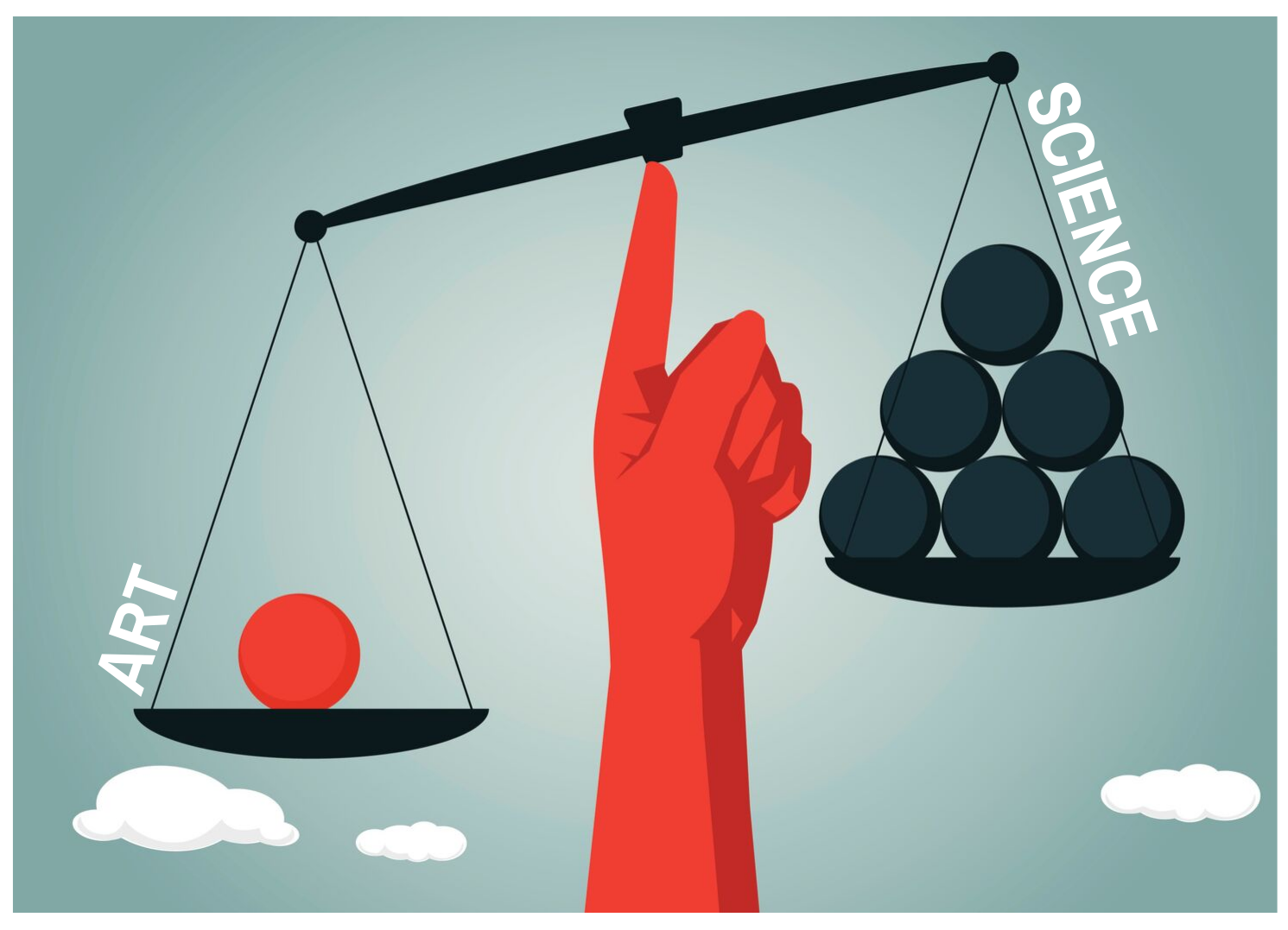
Art or Science
Is product management art or science?
I’m helping an organisation build out their product management team. We’ve looked at their needs, built a skills gap canvas and identified what they require in terms of hard skills. Even with all that in place, the stand out skill that I’m always looking for is an ability to balance art and science. You can describe this in a number of ways; creativity and structure, ingenuity and discipline. Great product managers have enough creativity to define a truly compelling proposition and enough structure to get a complex product to launch without dropping a major component. It’s a mix of skills that is makes the role pretty special and it’s difficult to find discipline and creativity in the same person.
read more

Tribes and Squads
The concept of Tribes and Squads seems to be really gaining attention in our customer base. We’re working with customers and trying to help them build models that work for their markets, people and products. Thought it was worth sharing this – our view of how Tribes and Squads could structure in large B2b teams.
1. Market-focused teams gather customer and market feedback. They build business cases in the form of commercial propositions
2. Portfolio owners (Tribe leader with P&L responsibility for a product range) reviews the propositions and accepts or rejects them
3. Squads (small cross function teams) deliver the work
4. Chapters own the resource
The benefit is the dynamic team structure – rather than the traditional world where a static team need to be kept busy, this model gives flexibility – Tribes and squads grow and shrink, form and fracture according to market demand.
read more

Key Characteristics of a Good PM
It’s a question we face all the time. Mostly, when we’re helping businesses build a product management function. When recruiting experienced Product Managers, you might look for certain skills; launch skills, research skills, pricing skills, etc.
Why not look internally for those who are looking for a new challenge? They might not have the experience or skill set just yet, but do they have the core capability?
Try our quick checklist for working out if they have PM potential:
Curiosity – Do they demonstrate intellectual interest? Are they eager to learn?
Drive – Do they show ambition?
Discipline – Are the organised?
People skills – Can they get people to listen to them. Can they take people with them? Are they charismatic?
Communication – Can they get their point across clearly and quickly?
Thought leadership – Do they have vision? Are they a creative problem solver?
read more
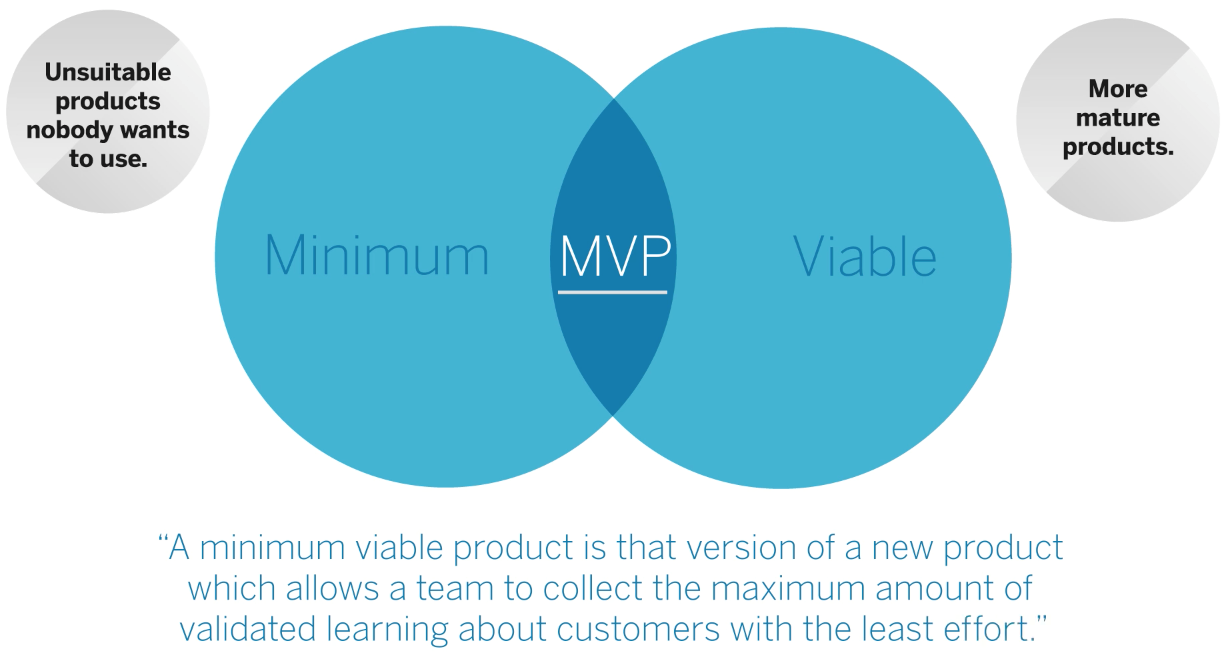
MVP
Why Do We Use It?
Answering this question allows us to really pin point the value of our product, why do customers buy in and use the product, what is it that seals the deal for them?
The MVP approach helps us to identify & prioritize our:
• Addressable market.
• Market segments.
• Personas in that segment.
• User stories for our personas.
Building the final product; takes a long time, is expensive and high risk. Rather than trying to deliver a fully rounded product, that is all things to all segments, at the outset; we use the MVP approach to help us prioritize our development roadmap.
Careful prioritisation means we can manage the capacity of our development team while still meeting the needs of our customers.
Some recent high-profile success stories include Dropbox, Airbnb, Groupon, Spotify and Twitter.
So before development:
- We prioritize our markets.
- Then we prioritise our personas.
- Followed by the features.
- Then we develop user stories
And we do all of this so that we can develop our product in a controlled and carefully prioritized sequence, meaning we deliver what is of highest value to our prioritised customer base and start generating revenue early. This also gives us a plan for updates a developments to improve the product, post launch.
read more
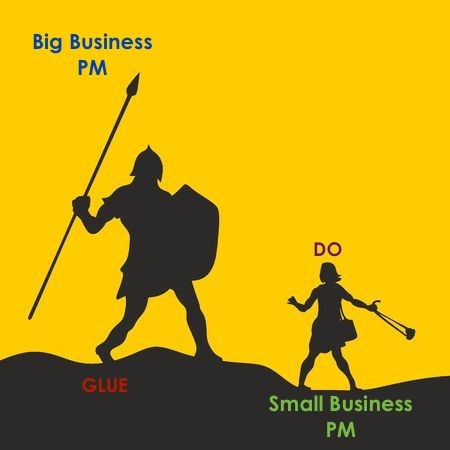
Big Business vs Small Business
We train product management in some of the biggest and smallest companies globally.
Last year our biggest client employed over 4,000 people in product roles and our smallest had a product management team of one. Clearly there is going to be some change to the PM role depending on the size of the business and the product team, so what is the difference?
What does product management look like at these extremes? I’d characterise it like this – GLUING VS DOING.
In a big team, the product manager has marketers, pricing experts, launch managers, research teams, etc. Their job is to use those extensive resources to build out the perfect product. They GLUE.
In a small team, the product manager doesn’t have the same extensive team and resources available, therefore they need to figure out most of the detail for themselves. They DO.
The core discipline remains the same but the daily actions can look very different. When we train teams we pay attention to this because we are aware of the differences – it’s one of the ways we can be effective in very big and very small teams.
read more
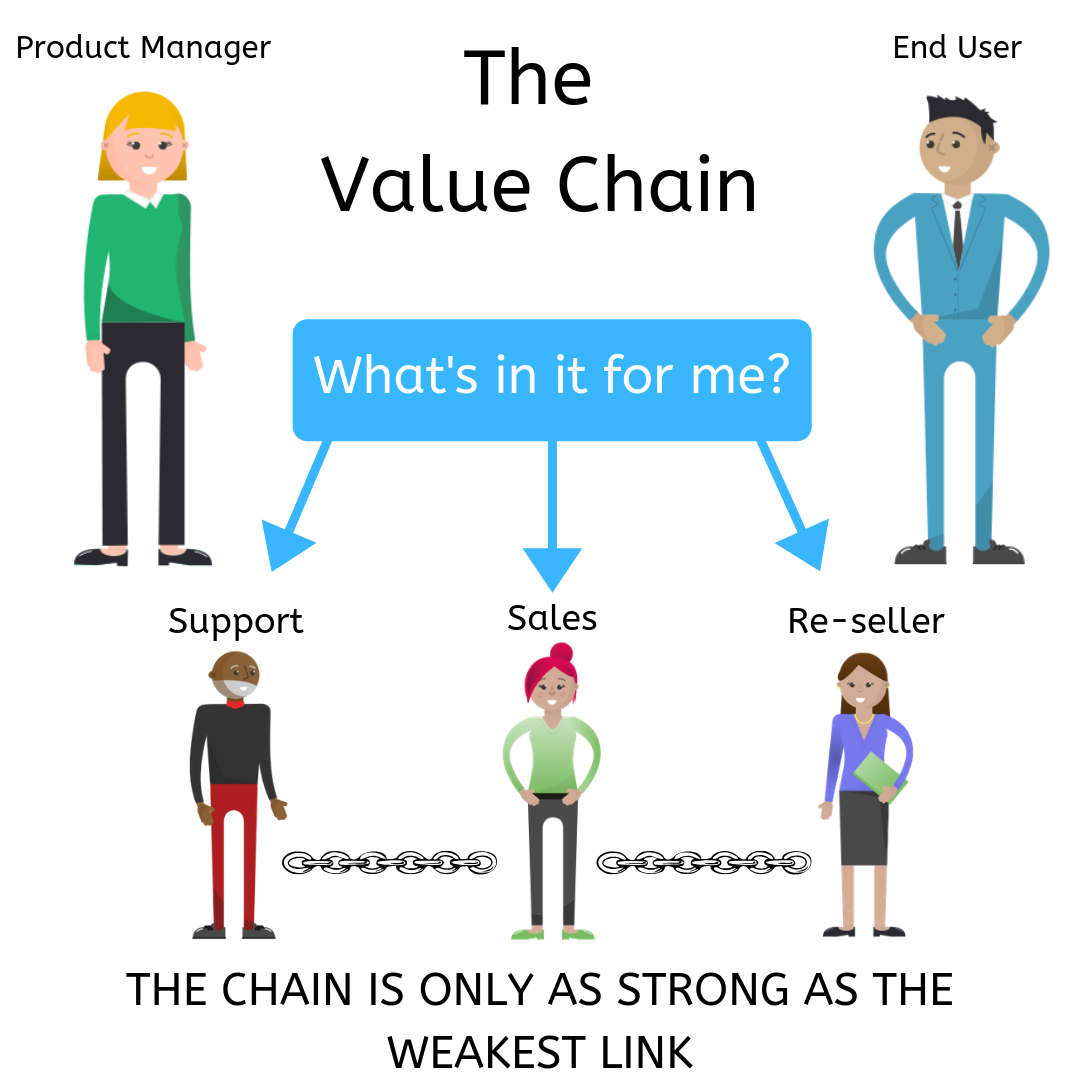
The End User
Who is your customer?
We often think of our customer as the person or business that uses our product – the end user. But it’s often more complex than that, and as a Product Manager we need to define and communicate these complexities.
Reaching that end user often means working with other teams – sales, support, third party resellers, etc. The point is this; If those intermediary teams do not see the value in your product, you’ll never get to the end user. Think of this as a value chain – you’re at one end, the end user is at the other. The chain is only as strong as its weakest link; if the sales team don’t understand your product, or the third party reseller wont stock it then the end user won’t even see your product.
So who is your customer? Everyone in the value chain. Try and address ALL their needs and motivations along the way. The chain will be strong and more likely to reach the final link – the end user.
Gee – problem you’ve got, is your pictures are so good, I want you to make this in to a blog pic as well…. It’s your own felt for being too sick!
read more
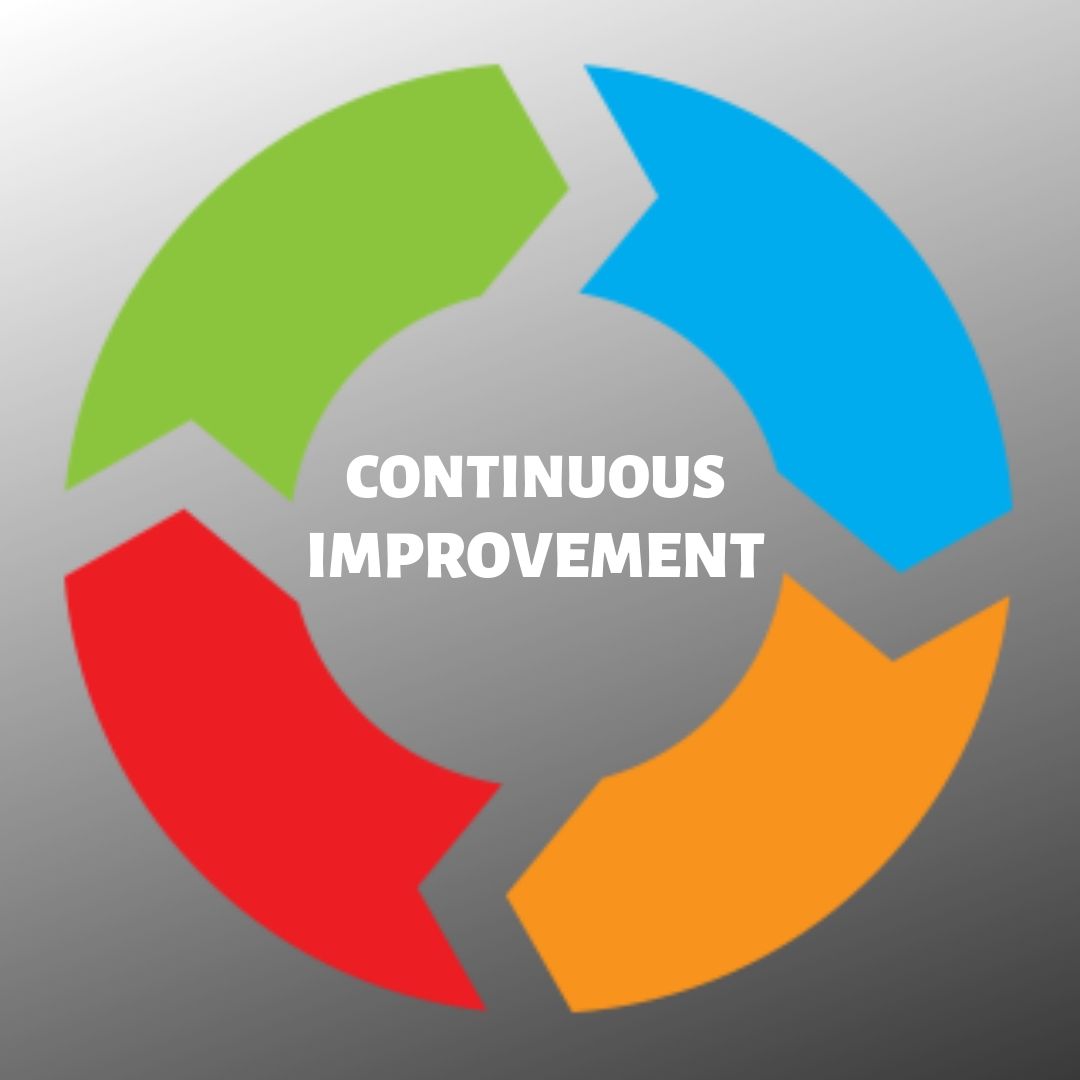
Continuous Improvement
What does a Product Manager do?
Our role can be complex and difficult to describe, and product culture within company can influence our definition massively. If we don’t have a clear purpose then we run the risk of being misplaced in our business, step forward all those Product Managers who really act as sales support or project managers...
So we define the Product Management role in this way.
“Product Managers reduce the risk of launching a product flop and increase the success of products in market”.
So what does that mean? Well, product failure occurs in every sector. By using a professional PM framework a Product Manager reduces the risk of a potential product flop getting to market (we assess before we launch). Then, by using the same PM framework, they ensure that existing products remain successful for longer (we continuously improve products). If there’s a 25% product failure rate in your industry and your PM skills reduce that to 5% in your business then that’s great product management.
read more
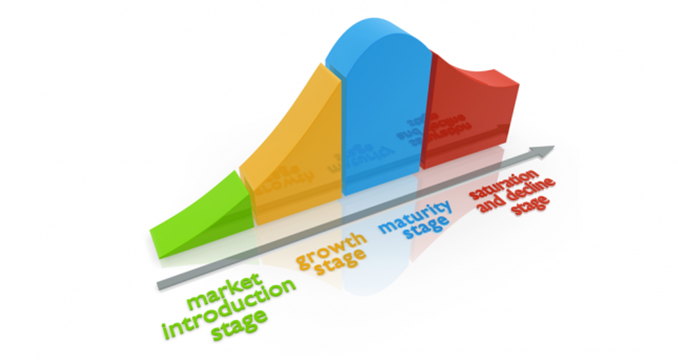
Product Life-cycle
Managing Through Product Life-cycle
Product management and innovation are intimately connected processes that require skilful interventions to maximise returns at every stage.
Milestone phases that are tackled as products move from their birth to infancy and ultimately to their maturity include:
- The Product Lifecycle,
- Crossing the Chasm,
- Entering the Tornado,
- Sustaining and Disruptive innovation theories
Familiarity with these theories is critical for product management success. The 7Ps of the marketing mix also provides a framework for different actions that can be taken across the lifecycle.
In order to maximise profit, product managers need to firstly understand at which stage the market is at. If the product is new for a brand-new market then disruptive innovation and its techniques are required to move through introduction and growth. If the market is already in the growth/maturity phases or beyond then sustaining innovation techniques are essential.
read more
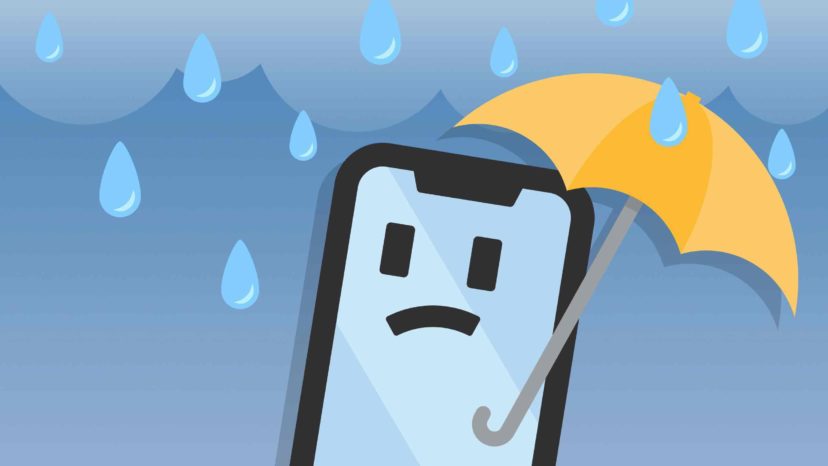
Trusting Product Features
An IP rating on a phone informs you, officially, what a phone is capable of handling in terms of its exposure to water. But it cost a company money to put any product through this testing and receive the official IP certification. Making a product more expensive in order to ‘officially’ reiterate the work the company has already done during product’s research and development.
OnePlus, a Chinese tech company known for their smart phones, have seen an opportunity here and instead of paying to have their OnePlus 6 & 7 Phones rated officially on their waterproofing capabilities, they have saved the time and money and just shown the customer exactly what the phone is capable of.
The reason its paid off… they have advertised the waterproof capabilities of the phones in a very honest way.
This has created an admirable amount of trust within the OnePlus community, with the consumer trusting the business, and helping to keep the price point much lower than the flagship equivalents.
This is a great cost saving method and the benefit can be passed onto the customer in a very visible way. Helping you to build customer loyalty and trust, though the method may not be as effective in heavily regulated markets, or B2B.
read more
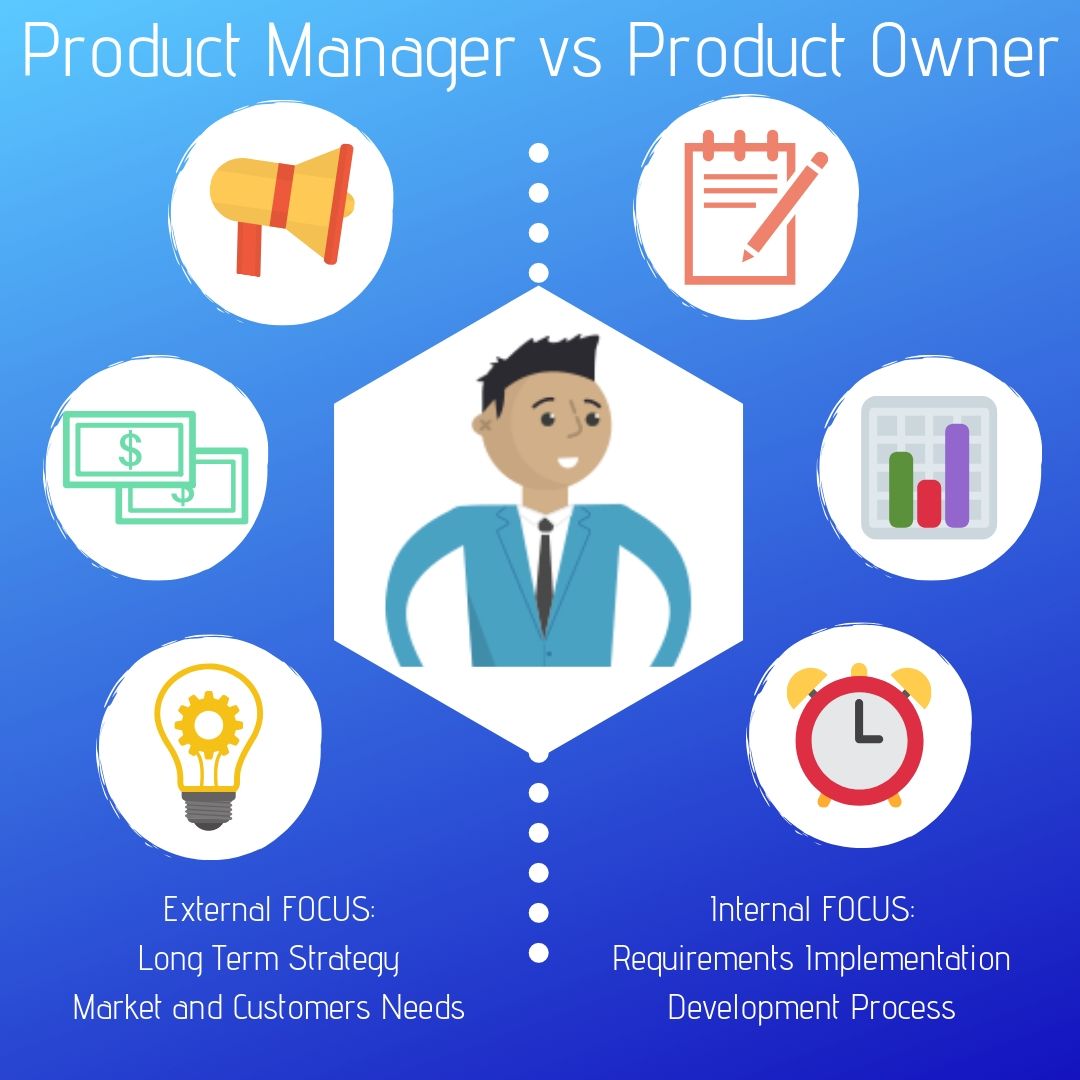
PM VS PM
Product Owner & Product Manger
Plenty of teams with have experienced this issue, how do you structure Product Owners and Product Managers in a team?
It’s a dilemma for many – we often work with teams where there is no role clarity, and often, one person ends up doing both jobs.
Typically, the urgency of Product Owner duties overwhelm the importance of Product Management duties. The net result of this is very little commercial and strategic thinking taking place – the individual becomes technical, tactical and faces into the organisation.
Short term thinking isn’t a problem, but look out over a longer timeline and the impact could be huge; limited vision, little market connection, and incremental product enhancement that exposes the business to risks from disruptive technology.
Product Managers need time to be strategic, commercial, outward facing and market-connected. Having Product Owners work well, alongside, Product Mangers can be difficult to balance but it can pay off when you get it right.
read more
Check out the Archive